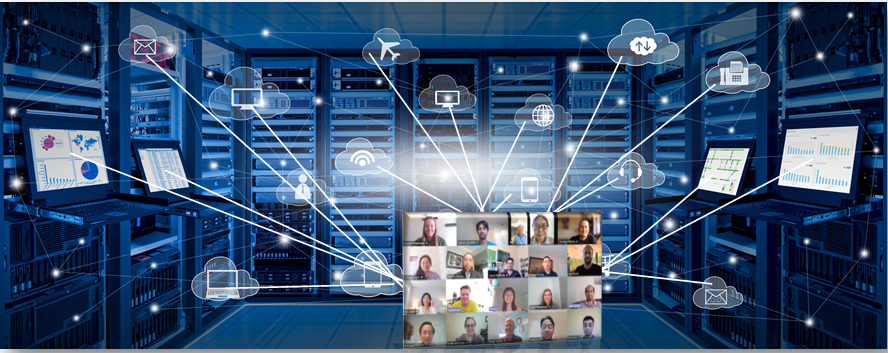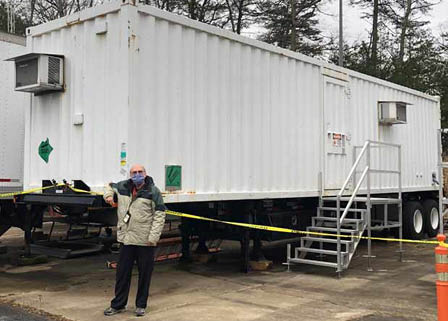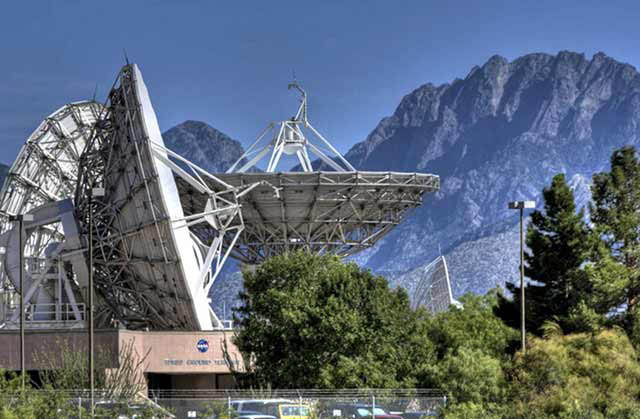Success Stories
SSAIHQ CMS Display Portlet
Success Stories
Breadcrumb
SSAI’s Proactive and Innovative IT Teams Enabled a Smooth Transition from Onsite to Telework
Anticipating an impending quarantine, SSAI engineering and IT teams spent the approximately one month between the onset of the COVID pandemic (Feb 2020) and issuance of the mandatory telework order (March 2020) successfully preparing for a smooth transition to 100% remote operations for all SSAI employees.
These examples are but a sampling of our efforts to safeguard the investments and best interests of our customers, colleagues, and employees – historically, during the ongoing pandemic, and into the future as we continue to expand and enhance our already highly developed IT teams in preparation for whatever new challenges tomorrow brings.
Overview
As a general rule, protocols governing what to do in the event of a mandatory telework order due to a global pandemic are not found within any contingency plans. Moreover, adjusting to such circumstances is exponentially more complicated when designing, building, testing, launching, and monitoring multi-million-dollar spacecraft operations is among one’s primary responsibilities. Thus, to offset the potential risk as much as possible, at the first indication of an impending global pandemic, SSAI’s engineering and operations teams initiated a vigorous  coordination program with the corresponding customer IT teams to ensure that everything required to remotely maintain standard operations was in place, should a full-scale quarantine be established. Due to the proactivity, foresight, and cooperation of SSAI’s management, science/engineering teams, and IT specialists, when the time came for a full-on lockdown, SSAI-led projects were well prepared to make a smooth transition from onsite to telework.
coordination program with the corresponding customer IT teams to ensure that everything required to remotely maintain standard operations was in place, should a full-scale quarantine be established. Due to the proactivity, foresight, and cooperation of SSAI’s management, science/engineering teams, and IT specialists, when the time came for a full-on lockdown, SSAI-led projects were well prepared to make a smooth transition from onsite to telework.
Results
SSAI’s instrument support group, which provides 24/7 mission critical support for several key NASA satellite instruments painstakingly worked with the appropriate IT teams and held rehearsal exercises to ensure that key data products from on-orbit calibration and critical instrument operations could be successfully run from home without access to work facilities and systems. In response, the customer lauded the team for their proactive approach, collaboration effort, and efficiency.
Less than a month into the pandemic, SSAI staff on the GOES-T team worked with Project Management, NASA Facilities Management, and other mission partners to establish a Remote Test Control Room (RTCR) that mirrored the primary TCR and synchronized the distributed test teams. The RTCR provided the engineering team remote access to the on-site In-Control Test System, voice communication links with the test team, and the full complement of Data Analysis Tools. Under the circumstances the RTCR was as close to the TCR as possible and provided a stable working environment for the team, helped simplify a widely distributed support architecture, and was developed and operational in less than a month. SSAI personnel were heavily involved in establishing all the IT interfaces necessary to utilize this distributed approach, as well as in developing User Manuals for the remote log-in capability and data analysis tools, managing the day-to-day Voice system, and coordinating across the Project’s dynamic schedule.

Moreover, as the lockdown orders were announced, across Maryland in April 2020, SSAI’s Lidar at GSFC was right in the middle of a lidar/satellite campaign, as well as undergoing major modifications to several mobile trailers in preparation for a deployment to New Zealand. Designated "mission critical" early in the pandemic, SSAI's Larry Twigg was tasked with monitoring environmental conditions in the lidar trailers and labs to avoid damage to sensitive equipment, With a lot of teamwork and coordination, there was no loss to lidar/surface data of ongoing projects, and the team was able to facilitate infrastructure work for automation projects remotely, preparing the trailers for future deployment when permissible.

In another example, SSAI staff played a critical role in maintaining the Space Network’s cybersecurity Authorization to Operate (ATO) for cleared facilities supporting the Space Network Mission. The SSAI team was directly involved in developing ITsec-compliant approaches to allow for remote mission support of the Space Network during COVID restrictions, including defining ways to securely support testing and remote operations for the STPSat-6 mission readiness tests.
While the successes described above clearly demonstrate SSAI’s proactivity, organizational skills, and IT expertise, they are but a sampling of our efforts to safeguard the investments and best interests of our customers, colleagues, and employees – historically, during the ongoing pandemic, and into the future as we continue to expand and enhance our already highly developed IT teams in preparation for whatever new challenges tomorrow brings.

